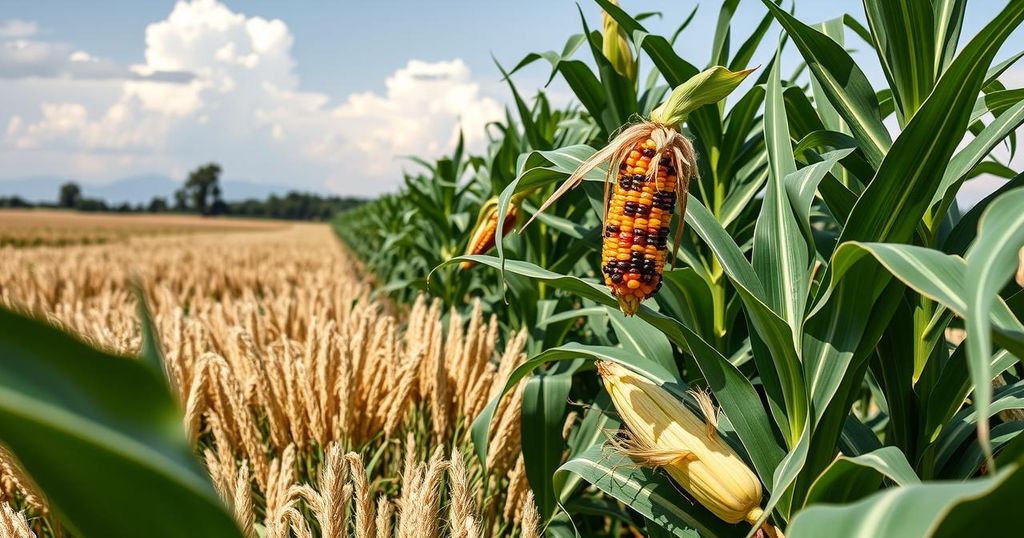Argentina’s dry weather has led to increased soybean and corn prices, with futures up 1.29% and 0.78%, respectively. Meanwhile, Kazakhstan capitalizes on the situation, exporting significantly more grain. Wheat futures also reflect global supply constraints. The shifting agricultural landscape signifies potential volatility and highlights the influence of climate challenges on market dynamics.
Recent weather patterns in Argentina have prompted a notable rise in soybean and corn prices, as market participants express concerns over crop yields. Specifically, futures for soybeans increased by 1.29% to $10.04 per bushel, and corn saw a 0.78% rise to $4.54 per bushel on the Chicago Board of Trade (CBOT). These price movements are primarily driven by prolonged dry conditions impacting the upcoming 2024/25 harvests, despite prior rainfall providing some relief. Concurrently, wheat futures rose by 0.8% to $5.33 per bushel, reflecting global supply constraints attributed to adverse weather. In a contrasting development, Kazakhstan has taken advantage of market conditions by significantly increasing its grain exports, shipping 3.7 million metric tons of newly harvested grain from September to December, representing a 54% increase compared to the previous year. This has spotlighted the dynamics of international grain trade, particularly as farmers in France protest challenges stemming from perceived unfair competition and restrictive agricultural policies.
The rising prices for soybean and corn markets can be attributed to adverse weather conditions in key agricultural regions such as Argentina, which has been experiencing prolonged dry spells impacting production forecasts. These changes underscore the increasingly volatile nature of global agricultural markets driven by climatic challenges. Conversely, Kazakhstan’s willingness to expand its grain exports amidst these disruptions illustrates the shifting landscape of global agricultural trade and exemplifies how countries adapt to the challenges of climate-induced variability and economic pressures on agricultural practices.
In summary, the current weather-induced fluctuations in soybean and corn prices reflect broader agricultural challenges faced globally. The ongoing dry conditions in Argentina are reshaping market dynamics, resulting in heightened commodity prices as yield forecasts dim. Meanwhile, Kazakhstan’s export growth emphasizes a strategic pivot in global grain supply, revealing the intricate interplay between weather events, market responses, and geopolitical trade strategies. Such developments warrant continued vigilance among investors who must navigate the complexities of an evolving agricultural environment.
Original Source: finimize.com






